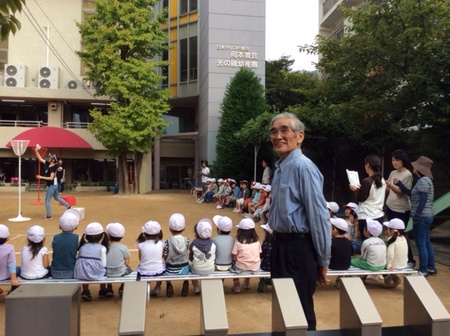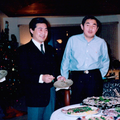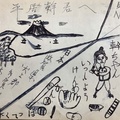Initial Plan to Return to Canada and Eventual Stay in Japan
As mentioned earlier, Mikio’s father expressed regret for his decision to return to Japan and often apologized to his children, saying that it was a mistake. Furthermore, he frequently urged Mikio to move back to Canada and make a new life there. Mikio recalls him saying, “Mikio, Japan is not the country that you are meant to live in. Japan is too cramped for you, and your personality is much more suited to living overseas. I really want you to make your life in Canada!” Mikio has never forgotten these words of his father, and he believes that he was wishing for his own lost Canadian dream to be fulfilled by Mikio.
Consequently, while in university, Mikio made plans to move to Canada after graduating. However, as the time of his graduation approached (March, 1962), he received a letter from one of his father’s most trusted friend in Canada, Mrs. Miyake, explaining that the Canadian economy was doing poorly and that it would be better for him to wait a couple more years before making the move, and that he should find employment in Japan in the meantime. This situation was also confirmed through a visit to the Canadian embassy in Tokyo. Mikio followed this advice and decided to temporarily postpone his move to Canada.
Employment History in Japan
In addition to studying English at university, Mikio had many chances to speak English with the foreign missionaries in his church, and became quite fluent. In order to save more money for his future move to Canada, he looked for some part time employment in Japan. On one occasion he worked together with his father as a simultaneous interpreter at an international trade fair for small and medium sized businesses held in Osaka. One of the displays at the fair was by a pearl company located at Lake Biwa called Jinbo Pearl Company. This company happened to be managed by the husband of a cousin, and Mikio’s father had already started working there. At the fair, the majority of his work involved negotiating with foreign buyers. Although he was extremely busy, he found this work very interesting.
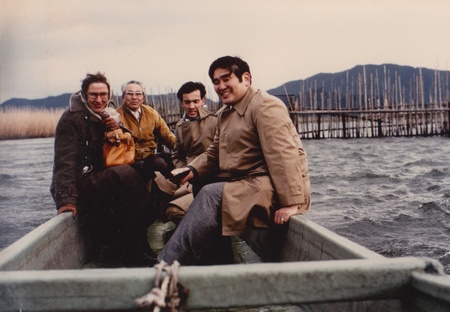
In 1957, the son of the owner established a new export company in Kobe called Jinbo Pearls Exporting Co. Ltd. It dealt with processing and exporting Biwa freshwater pearls. Mikio’s father transferred to this new company and Mikio was also offered a position which he eagerly accepted, and he started working there after graduating from Doshisha University. This was the beginning of a career with the company which would continue for 30 years. At first, his work consisted mainly of sending letters to various pearl import companies around the world in order to start business relationships with them. However, eventually he became vice president and was involved in all aspects of the company management including buying and selling. The company grew from about 5 or 6 employees to more than 20. However, he resigned from this career in 1992 after the bursting of the economic bubble.
Next, he worked for 2 years at Kobe Gyosei Gakkuen, a private high school that specialized in educating special-needs students, where he taught history, English, and bookkeeping. In 1994 he started working as a clerk at a transportation company. This mainly involved various kinds of administrative work and taking care of the drivers. Due to poor health he retired from this position in 1997.
In 1998 he returned to the pearl business field, joining the Japan Pearl Exporters Association. At first he just did bookkeeping, but his duties quickly expanded and eventually he became the Executive Director of this association. As Executive Director, he engaged in various major activities to promote the export of Japanese Akoya Pearls, established a new pearl inspection system, arranged for international pearl auctions to be held in Kobe, and attended the World Pearl Organization meetings in New York and Tahiti. He also recalls working very hard to improve and enhance the Japanese pearl booth at the Hong Kong Jewelry Show. He retired in 2009 at the age of 69.
However, although past retirement age, he did not stop working. He was instrumental in establishing the Hyogo Unga Shinjugai Project1 which he now continues to help manage. This organization mainly educates school children about water ecology; for example, the importance of keeping water clean, the roles of marine creatures such as plankton in water ecology, and more specifically, how this relates to the cultivation of pearls. He explains, “Every year, more than 100 children join the project and try their hand at various aspects of operating the farm, harvesting the pearls and cleaning them. In addition, they get to create their own jewelry with the cropped pearls and conduct a pearl fashion show.”
He is now in his eleventh year with this project. He is actively involved every week and says, “When we started, we initially faced resistance from some pearl company presidents, but we finally succeeded with strong support from parent-teacher associations. Now it is very successful. Promoting the understanding of pearls like this in the Pearl City Kobe is the most important work I have ever done in my life, and I am very proud of it.”
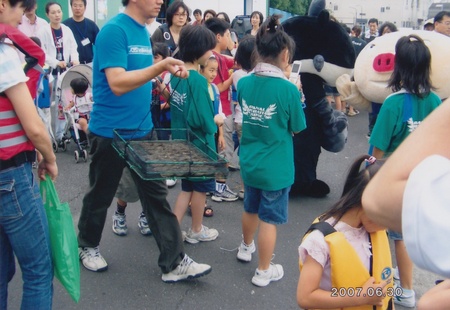
Memories about His Mother
Mikio remembers his mother, Mitsue, as someone who, in spite of the extreme difficulties and heartbreaks she faced in her life, remained strong and optimistic about the future. As noted earlier, she was only 16 years old when she married. Although she had no training in how to be a housewife and was unable to read or speak English at the time, she travelled alone to Canada to join her husband. In difficult times she often expressed her enduring optimism with the phrase, “Things will somehow turn out ok” (何とかなるわ). Later she became able to both read and converse quite well in English.

After returning to Japan, in addition to taking care of her family, she also worked hard outside the home to supplement her husband’s income. First she got a job working as a housekeeper at the American armed forces camp at Otsu where her husband was also employed. Later, she worked helping the family of the founder of Jinbo Pearl Company where her husband also had started working after his job for the American armed forces had finished.
Mikio also recalls that she had a very active sense of curiosity and participated in various activities and hobbies. One of his fondest memories is watching a professional baseball game between Hanshin Tigers and Tokyo Giants with her at Koshien Stadium. She really enjoyed cooking and knitting. In her fifties she began to study Chinese poetry recitation (詩吟), and advanced to the top level. As mentioned earlier, Mikio felt that his entering Doshisha University was the best present he could give her, which strongly suggests that she had played an important role helping him reach that educational milestone.
His Present Sense of Relation to Canada
Some of the Nikkei exiles interviewed by Kage, who were already teenagers when they were sent to Japan and hence were conscious of the injustices they had suffered at the hands of the Canadian government, were very bitter at Canada for years afterwards. In contrast, as noted above, Mikio was so young at the time that his memories even of the internment were mainly pleasant ones—exploring nature, playing and getting into mischief with friends, and enjoying kindergarten life and the kindness of his teachers. Also, his parents did not pass on to him their own anguish from the uprooting and incarceration, and his father rarely even talked about this difficult period, even later in life. Hence Mikio was spared much of the sense of betrayal and resulting anger towards Canada that lingered for years in the minds of the older deportees.
Although he has never returned to Canada, Mikio has continued to have a deep interest in Canada and Japanese Canadian history. This is attested by his careful preservation of documents, photos and other materials related to his family’s time in Canada. He also has continued to read extensively about Japanese Canadian history and related human rights issues. He takes pride in telling people that he was born in Vancouver.
He shows no personal bitterness about what his parents suffered in Canada and says, “I am so glad that, in spite of everything that happened to my parents, they were finally able to succeed and have a nice life in Japan.”
Notes:
1. In Japanese, 兵庫真珠貝プロジェクト.
* This series is an abridged version of a paper titled, “Life Histories of Japanese Canadian Deportees: A father and son case history”, first published in The Journal of the Institute for Language and Culture (Konan University), March 15 2017, pp. 3-42.
© 2018 Stanley Kirk



